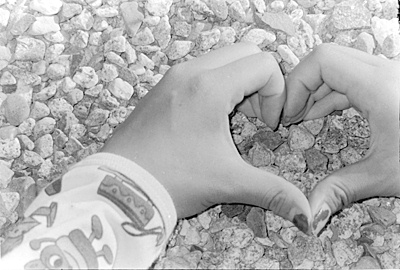All Nonfiction
- Bullying
- Books
- Academic
- Author Interviews
- Celebrity interviews
- College Articles
- College Essays
- Educator of the Year
- Heroes
- Interviews
- Memoir
- Personal Experience
- Sports
- Travel & Culture
All Opinions
- Bullying
- Current Events / Politics
- Discrimination
- Drugs / Alcohol / Smoking
- Entertainment / Celebrities
- Environment
- Love / Relationships
- Movies / Music / TV
- Pop Culture / Trends
- School / College
- Social Issues / Civics
- Spirituality / Religion
- Sports / Hobbies
All Hot Topics
- Bullying
- Community Service
- Environment
- Health
- Letters to the Editor
- Pride & Prejudice
- What Matters
- Back
Summer Guide
- Program Links
- Program Reviews
- Back
College Guide
- College Links
- College Reviews
- College Essays
- College Articles
- Back
The History of the Peace Sign
It’s on clothes, pins, scarves, and hats. The peace sign is a favorite symbol for many people. But, do they know where it came from? No, most do not.
The creator of the peace sign was British artist Gerald Holtom. His design was intended to be a symbol for the Direct Action Committee Against Nuclear War [DAC]. In 1958, Holtom created the symbol using two semaphore letters, N and D, to represent “nuclear disarmament”. The D is formed by holding one flag straight up and one straight down, while the N is formed by holding a flag in each hand and pointing them down at a 45 degree angle. Holtom put the two signs together inside a circle to make the sign.
The symbol was used at a DAC peace march, and quickly spread. The Campaign for Nuclear Disarmament [CND], which DAC became a member of, took on the symbol as their logo.
Bayard Rustin of the United States visited Britain to take part in the first Aldermaston March. Seeing the peace symbol, he took it back with him to the U.S., where he used it at Civil Rights marches.
In the U.S., the symbol was used in anti-Vietnam War demonstrations. It was on posters, badges, clothing, and jewelry. Some people even painted it on their faces.
Today the symbol has hit a popularity level equal to, if not greater than, the time of its creation. Almost every teenager has something with the peace sign on it. Whole sections in stores are dedicated to clothes and accessories with the symbol on them. These days, the peace sign and “going green” go hand in hand.

Similar Articles
JOIN THE DISCUSSION
This article has 0 comments.
